Ruth Everhart's Blog, page 15
May 9, 2017
When Grief Sucks Us Dry
how to rehydrate creativity
My little church experienced two unexpected deaths in two weeks — fatal heart attacks of otherwise healthy persons. During that same period, a good friend of mine was diagnosed with pancreatic cancer and died within a month.
I did all the things a pastor does. I visited hospitals and put together funeral services and preached the resurrection. But I surely felt the toll of all that emotion, both my own grief and the grief of others. I felt sad and shriveled up.
I wondered how — and even if — I could replenish my well of creativity. I stumbled across one answer unexpectedly. Months ago I purchased tickets for the whole family to see a musical, “Fun Home.” It was to be an early Mothers Day celebration. Our daughters were excited about the show and that was enough for me. I like to experience a show with a blank slate, so I was glad I didn’t know much about it — only that it was a memoir set to music, and much of it takes place in a Funeral Home.
As life would have it, my friend’s memorial service was set to take place at noon on the Saturday of the show, in downtown DC. The matinee began at 2:00, just a few blocks away. I wondered if it would be better to sell the tickets and book something for another day. I worried that we might all experience emotional whiplash, going from a real funeral to a staged one.
 In the end we decided to do both. The show was near the end of its run and rescheduling would be impossible. Besides, my friend who died, the Rev. Dr. Jeff Krehbiel, had been the type to live large. He would smile to know of our plans. So we attended the memorial service all together, at New York Avenue Presbyterian Church. The sanctuary is gorgeous and historic and the service was a beautiful testimony to a life well-lived. We listened to every word, shed tears, sang the hymns, greeted a few people (far too few because of our rush), then got ourselves to the theater.
In the end we decided to do both. The show was near the end of its run and rescheduling would be impossible. Besides, my friend who died, the Rev. Dr. Jeff Krehbiel, had been the type to live large. He would smile to know of our plans. So we attended the memorial service all together, at New York Avenue Presbyterian Church. The sanctuary is gorgeous and historic and the service was a beautiful testimony to a life well-lived. We listened to every word, shed tears, sang the hymns, greeted a few people (far too few because of our rush), then got ourselves to the theater.
“Fun Home” was extremely well done, with tight dialogue and intertwining stories. I especially loved seeing three versions of the same character on stage — a creative way to capture one person’s childhood and adulthood, through her own eyes as a memoirist. There was simplicity and power in that, and when the three versions of one person sang together, real depth.
In the span of a few hours my family experienced the whole range of pathos and joy that life can dish out. But it wasn’t a simple division — the memorial service being pure pathos and the broadway musical pure joy. Instead, both events were full of laughter and tears. Both events were orchestrated by people with immense creativity. Both events celebrated the lives of people who were fully committed to the power of love — love for family, for community, and in Jeff’s case, for the gospel.
As a sort of coda, the next night my husband and I took advantage of an opportunity to hear a group of a cappella singers perform Aaron Copland’s amazing work “In the Beginning.” The beauty of the piece fed my soul.
The next morning I noticed that I had begun to feel more like myself than I have in a long time.
So let me remember this for next time, and pass it along to you: When life sucks the juice out of you — and it will! — try immersing yourself in someone’s life story. Whether obituary or memoir. Whether a celebrated life or unknown. Whether a story tilting more toward pain or more toward redemption. The long view of any life will restore your hope. Certainly the creative juice that was poured into the telling will serve as marinade to plump the parts of you that feel withered.
Isn’t this why we’re put on the planet in community? To tell each other our stories. To remember the power of love. To hold tightly to the promise of resurrection. To refill each other’s wells.
.huge-it-share-buttons {
border:0px solid #0FB5D6;
border-radius:5px;
background:#3BD8FF;
text-align:right; }
#huge-it-share-buttons-top {margin-bottom:0px;}
#huge-it-share-buttons-bottom {margin-top:0px;}
.huge-it-share-buttons h3 {
font-size:25px ;
font-family:Arial,Helvetica Neue,Helvetica,sans-serif;
color:#666666;
display:block; line-height:25px ;
text-align:right; }
.huge-it-share-buttons ul {
float:right; }
.huge-it-share-buttons ul li {
margin-left:3px;
margin-right:3px;
padding:0px;
border:0px ridge #E6354C;
border-radius:11px;
background-color:#14CC9B;
}
.huge-it-share-buttons ul li #backforunical9216 {
border-bottom: 0;
background-image:url('http://www.rutheverhart.com/wp-conten...
width:30px;
height:30px;
}
.front-shares-count {
position: absolute;
text-align: center;
display: block;
}
.shares_size20 .front-shares-count {
font-size: 10px;
top: 10px;
width: 20px;
}
.shares_size30 .front-shares-count {
font-size: 11px;
top: 15px;
width: 30px;
}
.shares_size40 .front-shares-count {
font-size: 12px;
top: 21px;
width: 40px;
}
Share This:
The post When Grief Sucks Us Dry appeared first on Ruth Everhart.
May 5, 2017
When Your Thoughts Are Unthinkable
What's a Woman Good For?
I wrote this essay for the blog at Westminster Presbyterian Church, Albany, NY because I’ll be speaking there Saturday (May 20) and Sunday (May 21). If you’re in the Albany area, I would love to meet you there!
After I got raped, one of my problems was that my thoughts were unthinkable. This problem joined other, more pressing ones. Where could I be safe? Where could I sleep? And how could I get through the impending hours of darkness? I continually felt like I was jumping out of my skin.
I’ll admit that I’d never been terribly comfortable in my skin. I was raised by Calvinists, after all. Everything important was housed from the neck up. But after the rape I couldn’t just escape to my head. My very thoughts—such as they were—became heretical. They weren’t complete thoughts, just words lying in proximity to each other. Profanity. The divine name. Unanswerable questions. I tried to stop the words from lining up, but when I got tired enough, they did, and taunted me: “Where the eff was God?”
To back up — the rape occurred in 1978 when I was a senior at Calvin College. Two masked intruders broke into the home I shared with housemates. They held us hostage for hours, then took turns sexually assaulting us at gunpoint. After the criminals left and we got loose from our bonds, we debated whether or not to call the police. That conversation was a work of theology, although I didn’t realize it at the time. We were trying to reclaim our sense of agency because complete strangers had just taken something that we would never regain.
That semester I was taking Linguistics and World Religion. I was a true believer in the Reformed doctrine in which I’d been catechized. But the sovereignty of God was no longer a comforting thought. Had God willed this awful experience? Who, exactly, took away our agency?
“Put it behind you,” our professors advised. Yes, that was the response of our faith community — deafening silence. Meanwhile, the denomination was embroiled in a fight over the ordination of women. Male pastors debated: What does scripture say on this issue? But I knew what they were really debating: What’s a woman good for?
Eventually I found my way to the Presbyterian church, to seminary, and to ordination. I have been in ministry since 1990. When my own daughters became college-aged, I realized I had unfinished business about the trauma I endured. I wanted to figure out how, exactly, it shaped me. So I began to write. What message did I want to convey to my daughters about living in a woman’s skin? That writing became my memoir, RUINED.
I am passionate about the life of faith, which isn’t a thought exercise. Discipleship is living as God-breathed beings on a God-created planet. We live in bodies, and women’s bodies are too often in peril. The church can break its silence and become a powerful support to victims of sexual assault. There are more of them in your pews than you think.
.huge-it-share-buttons {
border:0px solid #0FB5D6;
border-radius:5px;
background:#3BD8FF;
text-align:right; }
#huge-it-share-buttons-top {margin-bottom:0px;}
#huge-it-share-buttons-bottom {margin-top:0px;}
.huge-it-share-buttons h3 {
font-size:25px ;
font-family:Arial,Helvetica Neue,Helvetica,sans-serif;
color:#666666;
display:block; line-height:25px ;
text-align:right; }
.huge-it-share-buttons ul {
float:right; }
.huge-it-share-buttons ul li {
margin-left:3px;
margin-right:3px;
padding:0px;
border:0px ridge #E6354C;
border-radius:11px;
background-color:#14CC9B;
}
.huge-it-share-buttons ul li #backforunical9204 {
border-bottom: 0;
background-image:url('http://www.rutheverhart.com/wp-conten...
width:30px;
height:30px;
}
.front-shares-count {
position: absolute;
text-align: center;
display: block;
}
.shares_size20 .front-shares-count {
font-size: 10px;
top: 10px;
width: 20px;
}
.shares_size30 .front-shares-count {
font-size: 11px;
top: 15px;
width: 30px;
}
.shares_size40 .front-shares-count {
font-size: 12px;
top: 21px;
width: 40px;
}
Share This:
The post When Your Thoughts Are Unthinkable appeared first on Ruth Everhart.
May 4, 2017
Blood is Thicker Than Water
A Reflection on John 19:26 "Woman, Behold Thy Son"
This is a guest post by my sister, the Rev. Susan Joy Huizenga. She preached this sermon on Good Friday (4/14/17) at the Aleda E. Lutz VA Medical Center; Saginaw, MI. Some of you know Susan from an earlier post about being a living kidney donor.
One day when I was about twelve years old, my sister Beth demanded to know all about a conversation I had with a friend in the neighborhood. She thought I knew some sort of secret, and she demanded to know.
“She made me promise not to tell” I objected.
My sister persisted “Come on, Susan! Blood is thicker than water!”
To the best of my recollection, I never did cave into Beth’s demand. But I got the point. Blood is thicker than water.
In New Jersey, when I was growing up in the 1970s, the mafia was much in control of certain aspects of life. Also, we lived in an Italian neighborhood. The ideal of family and clan loyalty was strong. Later, while I was working in Trenton NJ, the students were discussing the TV series “The Sopranos” and one of the students stated emphatically “I cannot watch that. My friend’s father was killed by the mob. It hits too close to home.”
{Law Enforcement realized they could not keep up with the number of murders and mayhem that this mob crime situation presented to them. Lawmakers and law enforcement got together and passed a law RICO to take out the financing of the operation. It worked. So the mob is still there but much diminished in power and scope.}
Hearing this ancient story about what Jesus went through, reminds us that thinking ‘might makes right,” or the rule by those with swords, or the fear of protesters, or the incompetence of those in authority, or inadequate human systems … none of this is new!
Jesus encountered all of these during his life’s mission of shining light on love, truth and peace. He encountered the misuse of raw power; outright jealousy of his popularity; intellectual arguments “What is Truth?”; misunderstandings of his teachings and his intent; treason; betrayal; human weakness of all kind. It’s all there in this account we just heard.
Nothing is new under the sun. To him or to us! I’m quite confident that Jesus was not surprised by any of this opposition, because he surely knew the system and the culture in which he lived. He also knew the human heart and its fears and weaknesses.
At the end of this account, we hear what Jesus has to say, and he directed his carefully chosen words to his mother and his beloved friend. He said to his mother “Woman, here is your son.” And to the disciple “Here is your mother” and in the shortest adoption proceeding on record, he created a family where there was no family a moment before.
Jesus prioritized relationship and defines family but in a different way than we may be expecting. Jesus showed us true Family Values in his actions.
We can only speculate on his motives, but it is clear that he is creating a sort of “Last Will and Testament” out of human love rather than ink and parchment. He was creating a will written in blood. So the family that Jesus creates, between his mother and his best friend, is held together by an intense form of love which was only possible because of their relationships with him.
So the bond of family becomes re-defined for me by this account. When I think about this brief conversation, I feel a renewed sense of optimism, of purpose, of hope and faith.
We do not get to pick the family we were born into. Some of us have fantastic family experiences, and some of us have horrific family experiences. Most of us likely fall somewhere in the middle.
But the good news today is that Jesus makes family bonds with his blood where there were none before. He did it 2,000 years ago, while hanging from a cross. He does it today when he creates homes for orphans and refugees…when people recognize that being a follower of Jesus means seeing the world as a place full of my siblings.
Sisters, brothers, mothers, fathers, aunts and uncles, cousins…and that because of this divine love that Jesus models for us in this last will and testament, that is the love that also fuels our important work here…
Being Family to those whose families let them down.
Choosing to see others as if they were our blood relatives.
Making family where there was none moments before.
Viewing every person through the lens of close family.
Now if you do this, I warn you, it will make your life more difficult. You will cry more, when you realize that people who are suffering are your siblings. That we are all connected.

When I tell people about my kidney donation, the first question they ask is “Was the recipient a family member, someone you knew?” And when I reply, I think to myself “Now she is.” She is my new little sister, Buddi Subba, formerly a resident of refugee camp in Nepal. She almost died and was brought here so she could live.
And when I was presented with the opportunity to give her a life-giving gift, I was hit with his realization: Jesus loves her just as much as he loves me. That she is my sister. So because of the blood of Jesus, she received a kidney and I received another sister. A younger sister. And all her family, too. I’m claiming her grandson, too.
So yes, Beth, Blood is Thicker than Water!
And the blood of Jesus is the thickest blood of all, because it allows us to consider each other as beloved family.
.huge-it-share-buttons {
border:0px solid #0FB5D6;
border-radius:5px;
background:#3BD8FF;
text-align:right; }
#huge-it-share-buttons-top {margin-bottom:0px;}
#huge-it-share-buttons-bottom {margin-top:0px;}
.huge-it-share-buttons h3 {
font-size:25px ;
font-family:Arial,Helvetica Neue,Helvetica,sans-serif;
color:#666666;
display:block; line-height:25px ;
text-align:right; }
.huge-it-share-buttons ul {
float:right; }
.huge-it-share-buttons ul li {
margin-left:3px;
margin-right:3px;
padding:0px;
border:0px ridge #E6354C;
border-radius:11px;
background-color:#14CC9B;
}
.huge-it-share-buttons ul li #backforunical9177 {
border-bottom: 0;
background-image:url('http://www.rutheverhart.com/wp-conten...
width:30px;
height:30px;
}
.front-shares-count {
position: absolute;
text-align: center;
display: block;
}
.shares_size20 .front-shares-count {
font-size: 10px;
top: 10px;
width: 20px;
}
.shares_size30 .front-shares-count {
font-size: 11px;
top: 15px;
width: 30px;
}
.shares_size40 .front-shares-count {
font-size: 12px;
top: 21px;
width: 40px;
}
Share This:
The post Blood is Thicker Than Water appeared first on Ruth Everhart.
April 19, 2017
Come With Me to Israel/Palestine!
I'm excited to be co-leading a pilgrimage March 5-16, 2018
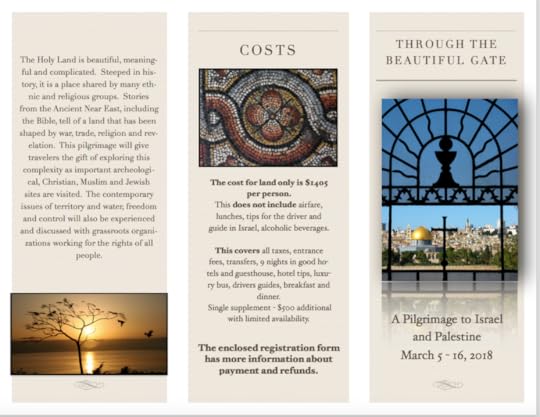
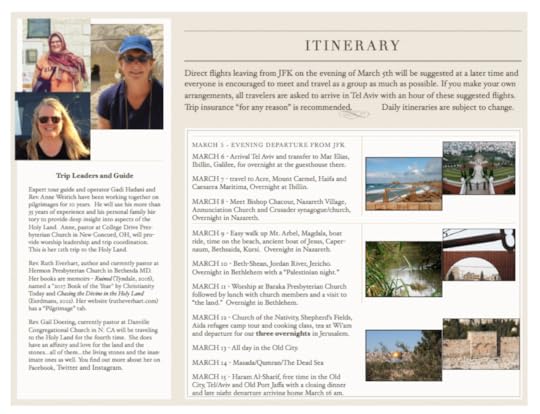
.huge-it-share-buttons {
border:0px solid #0FB5D6;
border-radius:5px;
background:#3BD8FF;
text-align:right; }
#huge-it-share-buttons-top {margin-bottom:0px;}
#huge-it-share-buttons-bottom {margin-top:0px;}
.huge-it-share-buttons h3 {
font-size:25px ;
font-family:Arial,Helvetica Neue,Helvetica,sans-serif;
color:#666666;
display:block; line-height:25px ;
text-align:right; }
.huge-it-share-buttons ul {
float:right; }
.huge-it-share-buttons ul li {
margin-left:3px;
margin-right:3px;
padding:0px;
border:0px ridge #E6354C;
border-radius:11px;
background-color:#14CC9B;
}
.huge-it-share-buttons ul li #backforunical9161 {
border-bottom: 0;
background-image:url('http://www.rutheverhart.com/wp-conten...
width:30px;
height:30px;
}
.front-shares-count {
position: absolute;
text-align: center;
display: block;
}
.shares_size20 .front-shares-count {
font-size: 10px;
top: 10px;
width: 20px;
}
.shares_size30 .front-shares-count {
font-size: 11px;
top: 15px;
width: 30px;
}
.shares_size40 .front-shares-count {
font-size: 12px;
top: 21px;
width: 40px;
}
Share This:
The post Come With Me to Israel/Palestine! appeared first on Ruth Everhart.
April 5, 2017
Why I’m Glad I Wrote a Rape Memoir
Sexual Assault Awareness Month -- You Are Not Alone
There are times when I feel sorry for myself. You too? I hate having the particular story I have. I hate that I spent years writing it down. Why did I go through all that agony? Then I get a letter like this one, and my self-pity washes away, like sidewalk chalk after a rain. What’s left behind are the stories that need to be told — in print and in pixels — words which will never completely disappear.
Dear Ruth — Thank you so much for sharing your story. I’m still sobbing after reading it straight through the last 3 days. Thank you for pouring out so much of your agony and fury onto the pages of your book. It is a perfect document. I found myself, while reading, getting lost for moments as if I were reading journal entries of my own describing the pains, confusions, and piercing cries of “WHY” to God. Thank you for not resisting God’s love, and for being willing to be used in people’s lives such as mine… used to offer a ray of hope to hang on. Reading your words was the first time I knew I wasn’t alone.
You found me and I found you. We are not alone.
Speak it. Speak the truth of our stories.
.huge-it-share-buttons {
border:0px solid #0FB5D6;
border-radius:5px;
background:#3BD8FF;
text-align:right; }
#huge-it-share-buttons-top {margin-bottom:0px;}
#huge-it-share-buttons-bottom {margin-top:0px;}
.huge-it-share-buttons h3 {
font-size:25px ;
font-family:Arial,Helvetica Neue,Helvetica,sans-serif;
color:#666666;
display:block; line-height:25px ;
text-align:right; }
.huge-it-share-buttons ul {
float:right; }
.huge-it-share-buttons ul li {
margin-left:3px;
margin-right:3px;
padding:0px;
border:0px ridge #E6354C;
border-radius:11px;
background-color:#14CC9B;
}
.huge-it-share-buttons ul li #backforunical9134 {
border-bottom: 0;
background-image:url('http://www.rutheverhart.com/wp-conten...
width:30px;
height:30px;
}
.front-shares-count {
position: absolute;
text-align: center;
display: block;
}
.shares_size20 .front-shares-count {
font-size: 10px;
top: 10px;
width: 20px;
}
.shares_size30 .front-shares-count {
font-size: 11px;
top: 15px;
width: 30px;
}
.shares_size40 .front-shares-count {
font-size: 12px;
top: 21px;
width: 40px;
}
Share This:
The post Why I’m Glad I Wrote a Rape Memoir appeared first on Ruth Everhart.
March 18, 2017
Silence & Snow
March 2017 at Holy Cross Abbey
Do you enjoy silence? My spirit is happier when I have the chance to immerse myself in the quiet of a prayerful place.
This week I was on silent retreat at Holy Cross Abbey in Berryville, Virginia, about an hour’s drive from my home. I used to come here regularly — during the decade I served Poolesville Presbyterian Church (2002-11). I used my continuing education funds and time. But instead of working on another degree, I would simply occupy a quiet room in a place fueled by the rhythm of monastic prayer.
More than five years ago, I quit my job as pastor in order to focus all my energies on writing. I found it challenging not to be employed. I created some sources of income: becoming an Air BnB host, supply preaching, and doing administrative work. Some of that activity was in response to financial need, but some was my strict sense of needing to pay my own way, even in our marriage.
One of the “extras” I cut from my life were retreats at the monastery. I told myself I could write in my own study and indulge in silence all day long if I liked. Still, it’s not exactly the same. There is something unique about coming to a place set apart and saturated in prayer. That sense of consecration is what draws people like myself, who come to make a retreat.
Last September I began as the pastor at Hermon Presbyterian Church. With continuing education funds once again available, I was happy to return to the Abbey. As always, I had a list of projects to work on and a stack of books to read. But I also spent hours each day wandering in beauty, sitting in chapel, or simply staring out the window. As a bonus — I happened to be here for the one significant snowfall of the year. There is no prettier place to be when the world is hushed by snow.

Every blogpost about Holy Cross Abbey must have a picture of the cows! Check out the mom with 3 calves, to the left.
One thing I value about dwelling in silence is the chance to notice the stray bits that echo in my heart. For instance, I received a few emails about church matters (on my phone), and was astounded how quickly and powerfully I became defensive and irritable. Being in this place, I had the space and time to notice that, and pray about it, and let the Spirit resolve the matter. I hadn’t realized those feelings were building, but obviously I was on the edge of feeling overworked and burdened. I had the feeling I got here just in time! So you can see that silence and snow are preventive health measures for my spirit.
How do you attend to your spiritual health?
The world will seldom ask that question. The world will simply ask you to keep getting and spending. Yet the Spirit has such gentle gifts to offer.
More blogposts about Holy Cross Abbey, dating back to 2009.
.huge-it-share-buttons {
border:0px solid #0FB5D6;
border-radius:5px;
background:#3BD8FF;
text-align:right; }
#huge-it-share-buttons-top {margin-bottom:0px;}
#huge-it-share-buttons-bottom {margin-top:0px;}
.huge-it-share-buttons h3 {
font-size:25px ;
font-family:Arial,Helvetica Neue,Helvetica,sans-serif;
color:#666666;
display:block; line-height:25px ;
text-align:right; }
.huge-it-share-buttons ul {
float:right; }
.huge-it-share-buttons ul li {
margin-left:3px;
margin-right:3px;
padding:0px;
border:0px ridge #E6354C;
border-radius:11px;
background-color:#14CC9B;
}
.huge-it-share-buttons ul li #backforunical9015 {
border-bottom: 0;
background-image:url('http://www.rutheverhart.com/wp-conten...
width:30px;
height:30px;
}
.front-shares-count {
position: absolute;
text-align: center;
display: block;
}
.shares_size20 .front-shares-count {
font-size: 10px;
top: 10px;
width: 20px;
}
.shares_size30 .front-shares-count {
font-size: 11px;
top: 15px;
width: 30px;
}
.shares_size40 .front-shares-count {
font-size: 12px;
top: 21px;
width: 40px;
}
Share This:
The post Silence & Snow appeared first on Ruth Everhart.
February 17, 2017
Feeding the Writer Within
stoking the flames of love
Certain loves are more difficult to keep alive than others. These are the loves that no one assumes you harbor.
Some loves are normative. I can tell you that I love my husband and daughters and you will understand me. I could say I love Jesus, and most of you will understand what I mean to say, even if you don’t share that love. I could mention that I love the smell of frying onions and the sight of melting cheese, and many of you will sigh and salivate.
I could even say that I love words and writing, and many of you will nod in agreement. But if I say that I love my writing self will you continue to nod? Or is a bit transgressive to turn a love inward?
Yet the best way for me to express my love of words and writing is to honor my writing self. I have to feed Writing Ruth. I have to stoke the flames of her loves.
How about you? Are there loves you struggle to honor?
This past Saturday something unexpected happen — something I’ll think of as an early valentine I gave to myself. At the last moment I attended the last day of the AWP conference (Association of Writers and Writing Programs) in Washington, DC. The opportunity was spurred by a long-time writing friend who traveled to the conference. Not only could I listen to writers talk about writing, but I could spend time with my friend, who is a phenomenal poet.
I had to scramble to make it happen. I sacrificed a few hours of sleep. But what I gained was not just a 24-hour series of events and conversations. I gained a space of time that reminded who I am: a writer. In fact, that is who God created me to be.
Perhaps this is why brief love liaisons don’t go out of fashion, even when they’re transgressive. Even a few hours can feed a hunger inside of us, a love that deserves to be stoked, an identity too often hidden.
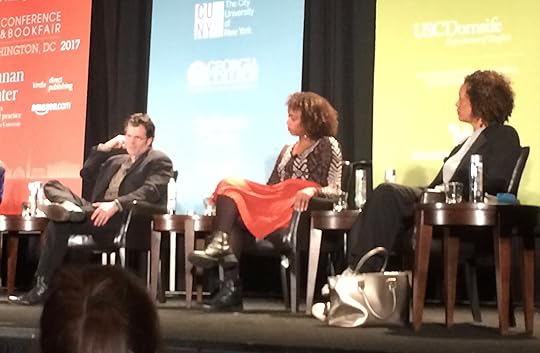
Andres Dubus III, Angela Flournoy, Aminatta Forna
This is how I fed my writer self at AWP:
wandered through an enormous book fair and chatted with other wordy-type people
discovered a writing program that tickles my fancy for summer 2018
listened to three authors read, then discuss how they work with their characters’ history. “What is our present moment except the consequence of everything that has gone before?”
heard a panel of authors discuss the topic Wayfaring Stranger. “Who gets to tell the story of a particular people?”
met writers in every stage of their careers, including the novelist Richard Bausch
gained insight into my own current writing goals and roadblocks
attended a candlelight vigil to support the right of free speech #WritersResist
closed the evening with a sort of bedtime story from Colum McCann, a reading from “”Letters to a Young Writer”
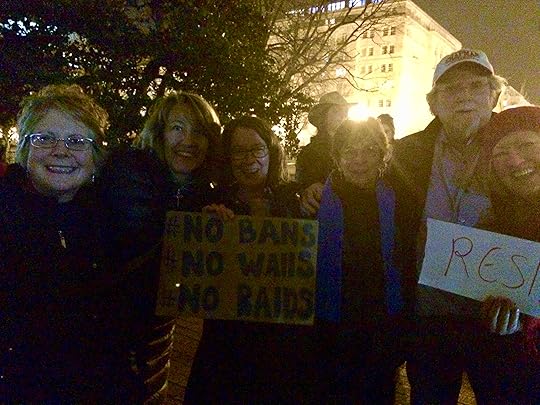
#WritersResist
.huge-it-share-buttons {
border:0px solid #0FB5D6;
border-radius:5px;
background:#3BD8FF;
text-align:right; }
#huge-it-share-buttons-top {margin-bottom:0px;}
#huge-it-share-buttons-bottom {margin-top:0px;}
.huge-it-share-buttons h3 {
font-size:25px ;
font-family:Arial,Helvetica Neue,Helvetica,sans-serif;
color:#666666;
display:block; line-height:25px ;
text-align:right; }
.huge-it-share-buttons ul {
float:right; }
.huge-it-share-buttons ul li {
margin-left:3px;
margin-right:3px;
padding:0px;
border:0px ridge #E6354C;
border-radius:11px;
background-color:#14CC9B;
}
.huge-it-share-buttons ul li #backforunical8951 {
border-bottom: 0;
background-image:url('http://www.rutheverhart.com/wp-conten...
width:30px;
height:30px;
}
.front-shares-count {
position: absolute;
text-align: center;
display: block;
}
.shares_size20 .front-shares-count {
font-size: 10px;
top: 10px;
width: 20px;
}
.shares_size30 .front-shares-count {
font-size: 11px;
top: 15px;
width: 30px;
}
.shares_size40 .front-shares-count {
font-size: 12px;
top: 21px;
width: 40px;
}
Share This:
The post Feeding the Writer Within appeared first on Ruth Everhart.
February 14, 2017
My Recent Adventures in the Public Sphere
featuring the Washington Post & Breitbart
Almost two months have passed since my Op-Ed appeared in “Acts of Faith” at the Washington Post, and conservative media vilified me for it. I wrote up an account of what happened and sent it to my subscribers. But as Breitbart continues to be a cultural force, and “truth” continues to be at issue, it seems best that I should set out the facts for anyone who might be interested in them.
The title of the Op-Ed was this: “Our culture of purity celebrates the Virgin Mary. As a rape victim, that hurts me.”
.huge-it-share-buttons {
border:0px solid #0FB5D6;
border-radius:5px;
background:#3BD8FF;
text-align:right; }
#huge-it-share-buttons-top {margin-bottom:0px;}
#huge-it-share-buttons-bottom {margin-top:0px;}
.huge-it-share-buttons h3 {
font-size:25px ;
font-family:Arial,Helvetica Neue,Helvetica,sans-serif;
color:#666666;
display:block; line-height:25px ;
text-align:right; }
.huge-it-share-buttons ul {
float:right; }
.huge-it-share-buttons ul li {
margin-left:3px;
margin-right:3px;
padding:0px;
border:0px ridge #E6354C;
border-radius:11px;
background-color:#14CC9B;
}
.huge-it-share-buttons ul li #backforunical8868 {
border-bottom: 0;
background-image:url('http://www.rutheverhart.com/wp-conten...
width:30px;
height:30px;
}
.front-shares-count {
position: absolute;
text-align: center;
display: block;
}
.shares_size20 .front-shares-count {
font-size: 10px;
top: 10px;
width: 20px;
}
.shares_size30 .front-shares-count {
font-size: 11px;
top: 15px;
width: 30px;
}
.shares_size40 .front-shares-count {
font-size: 12px;
top: 21px;
width: 40px;
}
Share This:
The post My Recent Adventures in the Public Sphere appeared first on Ruth Everhart.
February 8, 2017
How to Wear History
choices for churches
Some churches wear their history like a feathered cape — with the past thrown lightly over the shoulders of the present. The past is color, context, and dramatic flair.
Some churches wear their history like a shroud — with the past draped heavily over the face of the present. The past is silencing, secretive, and corpse-like.
The cape-wearing churches tell stories with many actors, who have many foibles.
The shroud-wearing churches tell stories where one person is to blame.
The cape-wearing churches tell stories that happen all over the place — the sanctuary, but also the retreat setting, the party at so and so’s house, the time we went to Capitol Hill, the homeless shelter, stories told with gusto.
The shroud-wearing churches tell stories that happen in the room where Session meets, or in the parking lot afterward, stories told in whispers.
The cape-wearing churches sometimes organize events by email, or Facebook, and plans can change at the last moment.
The shroud-wearing churches stick to their administrative manual, which is thick.
The cape-wearing churches are a pain to keep clean, what with the play-doh and streamers.
The shroud-wearing churches are clean, if you don’t mind the slight smell of stagnation.
.huge-it-share-buttons {
border:0px solid #0FB5D6;
border-radius:5px;
background:#3BD8FF;
text-align:right; }
#huge-it-share-buttons-top {margin-bottom:0px;}
#huge-it-share-buttons-bottom {margin-top:0px;}
.huge-it-share-buttons h3 {
font-size:25px ;
font-family:Arial,Helvetica Neue,Helvetica,sans-serif;
color:#666666;
display:block; line-height:25px ;
text-align:right; }
.huge-it-share-buttons ul {
float:right; }
.huge-it-share-buttons ul li {
margin-left:3px;
margin-right:3px;
padding:0px;
border:0px ridge #E6354C;
border-radius:11px;
background-color:#14CC9B;
}
.huge-it-share-buttons ul li #backforunical8928 {
border-bottom: 0;
background-image:url('http://www.rutheverhart.com/wp-conten...
width:30px;
height:30px;
}
.front-shares-count {
position: absolute;
text-align: center;
display: block;
}
.shares_size20 .front-shares-count {
font-size: 10px;
top: 10px;
width: 20px;
}
.shares_size30 .front-shares-count {
font-size: 11px;
top: 15px;
width: 30px;
}
.shares_size40 .front-shares-count {
font-size: 12px;
top: 21px;
width: 40px;
}
Share This:
The post How to Wear History appeared first on Ruth Everhart.
February 6, 2017
Healing Spiritual Wounds
an interview with Carol Howard Merritt
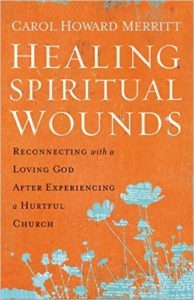 Have you ever been wounded by a church, or do you know someone who has been?
Have you ever been wounded by a church, or do you know someone who has been?
Have you ever wished you had the right book on your shelf, something solid and helpful you could read and pass along?
That book is finally here! It is destined to become a classic.
Carol Howard Merritt’s book is called: Healing Spiritual Wounds: Reconnecting with a Loving God After Experiencing a Hurtful Church.
I am privileged to call Carol a friend. We labored together in a writing group, and I know firsthand that she has mastered her craft. What’s more, she has wisdom, theological depth and ministry experience. I believe her book will help many, so I was thrilled to write an endorsement:
“Carol Howard Merritt gently unspools the tightly wound messages of shame and guilt that strangle spirits and cause damage to body, soul and relationships. Merritt shows the reader how to unfurl into the open space of God’s great love. An invaluable tool for faith leaders and healers of all types.”
There is so much I could say about this book! But I thought it would be more useful to let Carol say a few words. Especially note the three target audiences she lists at the bottom. Are you in one of those audiences? I am.
RUTH: Spiritual wounds are a very tender topic. Why did you decide to write this book? Was there a particular event that was the genesis of this project?
CAROL: There are many things that I could point to—events that spurred this book. I think that most writers, preachers, philosophers, or theologians have a core story that we revisit. We tell the same narrative, over and over again. If we’re clever, we switch up the characters and invent new settings, but we’re still working out that same tension in a fresh drama.
My story is rooted in the fact that religion is a place that wounds and heals. And as a minister, I would hear that tension echoed again and again. A pastor told a wife to stay in a marriage that was abusive. A priest molested a young man. A soldier heard the rhetoric of “God and country” so often that he didn’t know how to make sense of his PTSD. A woman believed that God blessed us with wealth, and felt abandoned by God when she had to face a foreclosure on her home. When these events occurred, we weren’t able to fully heal from them until we could locate the spiritual rift, recognize it, and tend to it.
RUTH: You write from a very personal place. What were some of the things you learned about yourself and others by writing memoir?
Years ago, I met Mickey Maudlin, Executive Editor at HarperOne. As I introduced myself, I mentioned that I had once gone to Moody Bible Institute and now I was a liberal pastor. He responded with an unfocused look at the upper corner of the room, and mumbled, “That sounds like an interesting story.” It was probably a simple nicety, but I’ve always had great respect for Mickey, so that was all the motivation I needed. I started writing down my story that day.
Then, each morning, I would give myself a good old-fashioned eye roll and think, You’re not famous enough, or accomplished enough, or old enough to look back on your life. Who do you think you are?
As the months wore on, writing the pages gave me the opportunity to sit down with my mom, sister, and brother and talk with them about topics that had always been too taboo or too painful to face. I had an excuse to ask a non-judgmental “why.” The process allowed me to enter into my family’s characters and understand them in a way that I haven’t been able to otherwise.
And I learned something from you—since we were both writing memoir at the same time. I learned to have compassion on myself. On an ordinary day, I look back on my own history and wonder, How could I have ever believed that? How could I have been so stupid? I can easily become ashamed or embarrassed of my past. Writing this allowed me to embrace who I was and love that person.
Before I wrote Healing Spiritual Wounds, I thought that writing memoir would be a self-indulgent, narcissistic exercise. But now I think everyone should write one, whether it gets published or not.
RUTH: The topic of spiritual wounds is wide-ranging. I can imagine many audiences for this book. Can you identify 3 (or more) specific audiences whom you hope will pick up this book?
~ People who grew up Evangelical. Since I came from a conservative background, I assume that the stories will resonate most with people who have had similar experiences of being disillusioned by evangelicalism. Evangelicalism is such a strong force in this country, and the fact that 80% of white Evangelicals voted for Donald Trump, left a lot of people concerned about the racism, sexism, and homophobia complicit in their faith. They suddenly feel rootless and without a home.
~ Church leaders. As I have been working with the material more, I also notice church leaders who work with people who have been hurt by faith communities. Or pastors have been wounded. Church leaders have always been focus for my writing. So, I structured the book in a format that people could work through, pulling from different sources of wisdom for exercises.
~ Armchair theologians. I also wanted the book to be an accessible introduction to feminist theology. I often read smart people who are working through some really difficult theological matters, and they don’t quite have the right tools to do it. More progressive theology might be out of reach for people who can’t go to seminary. I know that I was so beautifully transformed through studying various theologies, I’m hoping to introduce people to some of the basics I learned from studying feminist, womanist, and liberationist theologians.
The book launches TOMORROW, Feb 7. Please order it TODAY!
It’s a beautiful hardbound edition which you can order at any online retailer. The Amazon link is here. Quantity discounts available at 800ceoread. You can also read the first chapter for free at Carol’s website.
Please don’t wait to place your order. A book launch is an important time for a book — like the opening weekend of a movie. Numbers matter. Thank you so much!
.huge-it-share-buttons {
border:0px solid #0FB5D6;
border-radius:5px;
background:#3BD8FF;
text-align:right; }
#huge-it-share-buttons-top {margin-bottom:0px;}
#huge-it-share-buttons-bottom {margin-top:0px;}
.huge-it-share-buttons h3 {
font-size:25px ;
font-family:Arial,Helvetica Neue,Helvetica,sans-serif;
color:#666666;
display:block; line-height:25px ;
text-align:right; }
.huge-it-share-buttons ul {
float:right; }
.huge-it-share-buttons ul li {
margin-left:3px;
margin-right:3px;
padding:0px;
border:0px ridge #E6354C;
border-radius:11px;
background-color:#14CC9B;
}
.huge-it-share-buttons ul li #backforunical8894 {
border-bottom: 0;
background-image:url('http://www.rutheverhart.com/wp-conten...
width:30px;
height:30px;
}
.front-shares-count {
position: absolute;
text-align: center;
display: block;
}
.shares_size20 .front-shares-count {
font-size: 10px;
top: 10px;
width: 20px;
}
.shares_size30 .front-shares-count {
font-size: 11px;
top: 15px;
width: 30px;
}
.shares_size40 .front-shares-count {
font-size: 12px;
top: 21px;
width: 40px;
}
Share This:
The post Healing Spiritual Wounds appeared first on Ruth Everhart.




